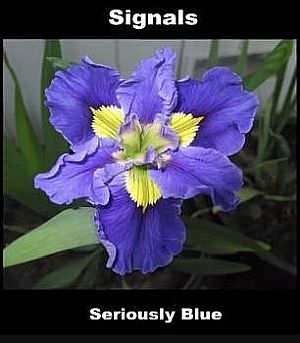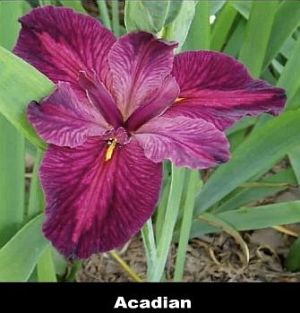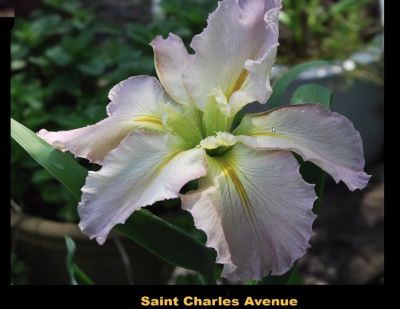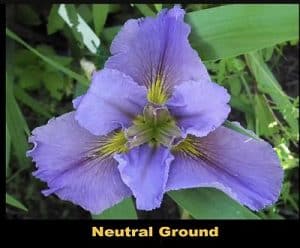Louisiana Irises
Irises are members of the Iridaceae family. The Louisiana Iris is a beautiful plant. It offers a wide variety of bloom colors, blue, burgundy, lavender, pink, purple, red, white and yellow. The Iris can be found in swamps, thus the name “Swamp iris”, also ditches and other wet areas. They bloom in the early Spring, require at least 6 hours of sun to full sun. La Irises do not have a beard. They have a patch of color called a “Style” instead of a beard to show bees where to get to the pollen.
Fall is the best time to plant La Irises as they begin to grow in the Fall and grow throughout the Winter to Spring as they bloom in late March and April. How can you be sure you have a La Iris? Louisiana Iris have a white area above the rhizome and if you cut the rhizome it is white inside. Others have red coloring inside the rhizome and red coloring just above the rhizome and root system according to Eileen Hollander, Advanced Master Gardener.

Irises prefer an organic, wet to moist environment. Fertilize them once in the fall and once in the winter (October and February). Irises have few pests or disease problems. Rust can occur in early Spring. It is recommended to cut out the affected area and discard in the trash. Leaf miners may appear but are a minimal problem. Remove affected leaves and discard in the trash.
The Louisiana species of Iris are: Iris hexagona, I. fulva, I. brevicaulis, I nelsonii and I. giganticaerulea. The Louisiana Iris grow all over the U.S but mainly in Louisiana. Hexagona, brevicaulis and nelsonii are going extinct. Eileen encourages us to buy Ls Irises and please “do not take Irises from the wild!” Fulva is short and grows in ditches between New Orleans and Baton Rouge. Also known as “Copper Iris.” The petals droop. They have an open style where bees and hummingbirds can pollinate it. Iris nelsonii, also called ‘Abbeville Red’ is found only in Abbeville, Louisiana, is mainly pollinated by the hummingbird. The style is closed like a tube so that hummingbirds can pollinate. It has drooping petals, Iris giganticaerulea are the tallest of Irises, has 3 standard petaloids that stand up straight. I. giganticaerulea may grow to 10 feet tall and found in thick swamps. It is the wettest of Irises and can tolerate a reasonable amount of sun, they come in blues, rare whites, off white and rarely pink. They make a good companion to bald cypress. They live in fresh water, no salt. Known as the Louisiana wildflower.

Imposters are often labeled as Louisiana Iris but are not. La Irises do not have a midrib in the leaf. Iris Virginica is a native Iris but not a Louisiana Iris is found mostly on the Northshore. Iris pseudacorus or yellow flag Iris is not a La. Iris. It has a midrib throughout the leaves. It is a taller pretty Iris from Europe, not a native, highly invasive and should not be planted with your other irises. the others will be crowded out and disappear. Grow it in a pot. It has evergreen foliage and grows all year round. It is the Fleur de lis. Dietes are African Iris, aka ‘Butterfly Iris. These are good clumping plants but not Louisiana Iris. Walking Iris are not Louisiana Iris.
Louisiana Irises may be purchased from specialty nurseries, online, nurseries that specialize in aquatic plants, from clubs and organizations at sales such as Greater NO Iris Society, annual sale in October, Spring Iris show in City Park, regular meeting rallies and giveaways, Pelican Greenhouse at City Park and Botanic Garden at Independence Park, Baton Rouge.

Sources:
- Patrick O’Connor, Hybridizer, GNOIS
- Eileen Hollander, GNOIS, MGGNO, Advanced Master Gardener (YouTube, Louisiana Iris)
- “Louisiana Gardener’s Guide” by Dan Gill and Joe White

By Karen Blackburn



